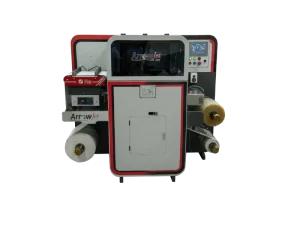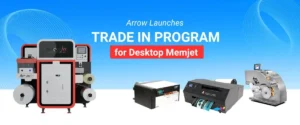Table of Contents
CBD Label Requirements
In the bustling world of CBD products, ensuring your labels meet regulatory standards is crucial. Let’s delve into the intricacies of CBD label requirements and how to navigate them effectively.
Understanding Label Compliance
Navigating the labyrinth of CBD label compliance demands a thorough understanding of the regulatory landscape.
While federal regulations remain ambiguous, the onus falls on businesses to comply with state laws. Familiarize yourself with FDA guidelines for cosmetics, which serve as a foundational framework for CBD product labeling. By adhering to these guidelines, you can mitigate the risk of legal repercussions and build trust with consumers.
When considering label compliance, it’s essential to understand that regulations may vary from state to state. Some states have adopted comprehensive guidelines for CBD product labeling, while others have more relaxed regulations.
Therefore, it’s crucial to research and understand the specific requirements of the states in which you intend to distribute your products. Additionally, keep abreast of any updates or changes to regulations to ensure ongoing compliance.
Essential Components of Your Label
Your label serves as the gateway to your product, providing consumers with vital information and instilling confidence in your brand. To ensure compliance and consumer safety, prioritize the inclusion of essential components such as:
The Importance of Ingredient Lists | CBD Label Requirements
Transparency lies at the heart of consumer trust. Provide a comprehensive ingredient list that leaves no room for ambiguity.
Whether it’s displayed on the outer packaging or directly on the product itself, ensure that every ingredient is clearly listed, including additives and potential allergens. This transparency not only fosters trust but also empowers consumers to make informed purchasing decisions.
In addition to listing ingredients, consider providing additional information about the sourcing and quality of your ingredients. Highlighting the use of organic or sustainably sourced materials can resonate with environmentally conscious consumers and enhance the perceived value of your product.
Unveiling Material Facts
In a market flooded with CBD products, transparency is non-negotiable. Disclose critical information such as whether your product is full-spectrum, broad-spectrum, or isolate. Additionally, include pertinent details such as expiration dates, manufacturing codes, and batch codes.
These material facts not only demonstrate your commitment to transparency but also enable consumers to assess product quality and safety with confidence.
When disclosing material facts, be thorough and explicit in your communication. Provide clear explanations of terms such as “full-spectrum” and “broad-spectrum” to ensure consumers understand the differences between these formulations. Additionally, consider including information about the extraction methods used to produce your CBD oil, as this can influence the quality and potency of the final product.
Printer Spotlight: ArrowJet Aqua 330R Lite

In the realm of label printing, the ArrowJet Aqua 330R Lite emerges as a standout choice for businesses seeking unparalleled quality and efficiency. Equipped with Memjet’s DuraFlex technology, this printer boasts an array of impressive features tailored to meet the demands of modern label production:
Single Printhead: The CMYK single printhead ensures stunning color reproduction and accuracy, allowing for the creation of vibrant and visually striking labels.
High Resolution: With options for 1600x1600dpi or 1600x954dpi resolution, the ArrowJet Aqua 330R Lite excels in producing detailed and crisp labels that capture every intricate detail.
Speed: With a production speed of up to 150 feet per minute, this printer delivers unmatched efficiency, enabling businesses to meet tight deadlines and fulfill orders with ease.
Media Size: The ArrowJet Aqua 330R Lite can accommodate media up to 15 inches in width, providing flexibility to address a wide range of label and packaging requirements.
Versatile Substrate Thickness: With a substrate thickness ranging from 2 mils (0.05mm) to 13.75 mils (0.35mm), this printer accommodates various label materials, including paper, film, and synthetics, ensuring compatibility with diverse application needs.
Ink Options: Choose between 2L or 10L ink tanks for flexible printing solutions tailored to your specific production volume and budgetary requirements.
Optimal Operating Conditions: Operating at temperatures of 68-86°F (20-30°C) with humidity levels between 30-50%, the ArrowJet Aqua 330R Lite ensures consistent and reliable performance under optimal environmental conditions.
Compact Design: With its compact dimensions, the ArrowJet Aqua 330R Lite fits seamlessly into any workspace, maximizing floor space utilization and streamlining workflow efficiency.
Power and Connectivity: The printer requires a 3-phase 22V, 30A power supply, supporting 50/60 Hz, and 6 bar for optimal functionality, ensuring compatibility with standard power outlets and connectivity options.
With its cutting-edge technology and robust feature set, the ArrowJet Aqua 330R Lite is the ideal choice for businesses seeking a reliable and efficient solution for label printing.
Whether you’re producing labels for CBD products, cosmetics, food and beverage items, or any other application, this printer delivers unparalleled quality and performance, helping you achieve exceptional results and stand out in a competitive market.
Deciphering Expiration Dates
In the realm of CBD products, freshness is paramount. Clearly display expiration dates to inform consumers of product viability and shelf life. This not only ensures consumer satisfaction but also underscores your dedication to quality assurance.
When determining expiration dates, consider factors such as the stability of CBD over time and the potential for degradation due to exposure to light, heat, or air. Conducting stability testing can help determine the shelf life of your products and ensure that expiration dates accurately reflect product quality and potency.
Navigating Manufacturing and Batch Codes
Behind every label lies a story of manufacturing precision and quality control. Manufacturing and batch codes serve as the breadcrumb trail of product traceability, enabling swift identification and resolution of quality issues.
Prioritize clear labeling of manufacturing and batch codes to facilitate efficient recalls and uphold consumer safety.
When implementing manufacturing and batch codes, consider using a standardized format that is easily decipherable by consumers and regulatory authorities alike. Include information such as the date of production, batch number, and manufacturing facility to provide comprehensive traceability.
Additionally, consider leveraging QR codes or other digital technologies to provide consumers with access to additional information about the manufacturing process and product testing results.
Serving Size and CBD Concentration
Empower consumers with clarity on dosage and potency.
Clearly communicate serving sizes and CBD concentrations per dose to guide consumers in achieving optimal results. By providing this information transparently, you foster consumer confidence and satisfaction.
In addition to providing serving size and CBD concentration information, consider offering dosage recommendations based on factors such as body weight, desired effects, and tolerance levels. This can help consumers make informed decisions about their CBD usage and maximize the benefits of your products.
Product Identity and Description
Capture the essence of your product with a compelling description that resonates with consumers.
Clearly articulate the purpose, benefits, and unique selling points of your product to differentiate it in a crowded market. A well-crafted product description not only captivates consumers but also cultivates brand loyalty and advocacy.
When crafting product descriptions, focus on highlighting the key features and benefits that set your product apart from competitors. Consider incorporating storytelling elements to create an emotional connection with consumers and communicate the value proposition of your product effectively.
Additionally, use language that is accessible and engaging to ensure that your description resonates with your target audience.
Net Quantity Disclosure
Eliminate ambiguity and instill trust with transparent net quantity disclosure. Display the quantity of contents prominently on both the outer container and the inner information tab.
This ensures consumers know exactly what they’re getting and reinforces your commitment to honesty and integrity.
When disclosing net quantity information, ensure compliance with regulatory requirements by using standardized units of measurement and accurate measurements. Consider providing additional information about the packaging size and dimensions to help consumers accurately assess the value of your product.
Additionally, consider highlighting any packaging innovations or sustainability initiatives that contribute to reducing waste and environmental impact.
Emphasizing Warning Statements
Prioritize consumer safety with comprehensive warning statements. Highlight potential risks, interactions with medications, and the possibility of failed drug tests to empower consumers to make informed decisions.
By prioritizing safety, you build trust and credibility with consumers, safeguarding your brand reputation.
When crafting warning statements, be thorough and transparent in communicating potential risks and precautions. Provide clear instructions for safe usage and storage of your products, and consider including information about potential side effects or adverse reactions. Additionally, consult with legal experts to ensure compliance with regulatory requirements and mitigate the risk of liability.
Name and Place of Business
Forge meaningful connections with consumers by providing clear and consistent contact information. Include your name and place of business on both inner and outer containers to demonstrate accessibility and accountability. This transparent approach fosters trust and confidence in your brand, laying the foundation for long-term relationships with consumers.
When providing contact information, ensure accuracy and consistency across all packaging and labeling materials. Consider including additional contact channels such as phone numbers, email addresses, and social media handles to facilitate communication with consumers.
Additionally, consider leveraging customer feedback and inquiries as opportunities to build rapport and improve your products and services.
FAQs
1) Are CBD labels regulated?
Yes, CBD labels are subject to regulation, primarily at the state level. It’s crucial to stay updated on evolving regulations to ensure compliance and avoid legal pitfalls.
2) What happens if my label is non-compliant?
Non-compliant labels risk legal repercussions, including fines and product recalls. Prioritize adherence to regulations to mitigate risks and uphold consumer trust.
3) Can I include health claims on my label?
Health claims are heavily regulated and must be supported by scientific evidence. Consult legal experts to ensure compliance with FDA guidelines and avoid misleading consumers.
4) How can I ensure my label stands out?
Focus on differentiation through clear communication of your product’s unique value proposition. Craft compelling product descriptions, prioritize transparency, and leverage distinctive branding elements to captivate consumers and stand out in a competitive market.
5) What labeling mistakes should I avoid?
Avoid common pitfalls such as inaccurate ingredient lists, misleading health claims, and insufficient warning statements. Prioritize thorough compliance with regulatory requirements to mitigate risks and uphold consumer trust.
6) Which is the Best Printer for Cannabis Label Printing?
The ArrowJet Aqua 330R Lite is the top choice for Cannabis label printing. With its advanced features like high resolution, versatile substrate thickness, and fast production speed, it ensures exceptional quality and efficiency, making it the perfect solution for Cannabis businesses.
Conclusion:
Navigating CBD label requirements requires attention to detail, thorough understanding of regulations, and commitment to transparency and consumer safety. By prioritizing compliance and clear communication, you can build trust with consumers and establish a strong foundation for success in the rapidly evolving CBD market.

Breaking News: Arrow Systems Partners with BUSINESSWARE to Transform Digital Printing Across Greece & Cyprus

Sid Sistemas de Impresión in Spain Installs ArrowJet Aqua 330R and DPR Taurus to Bolster Label Production

Step Inside Innovation: Arrow Systems New Experience Center Opens in Ontario, Canada.


